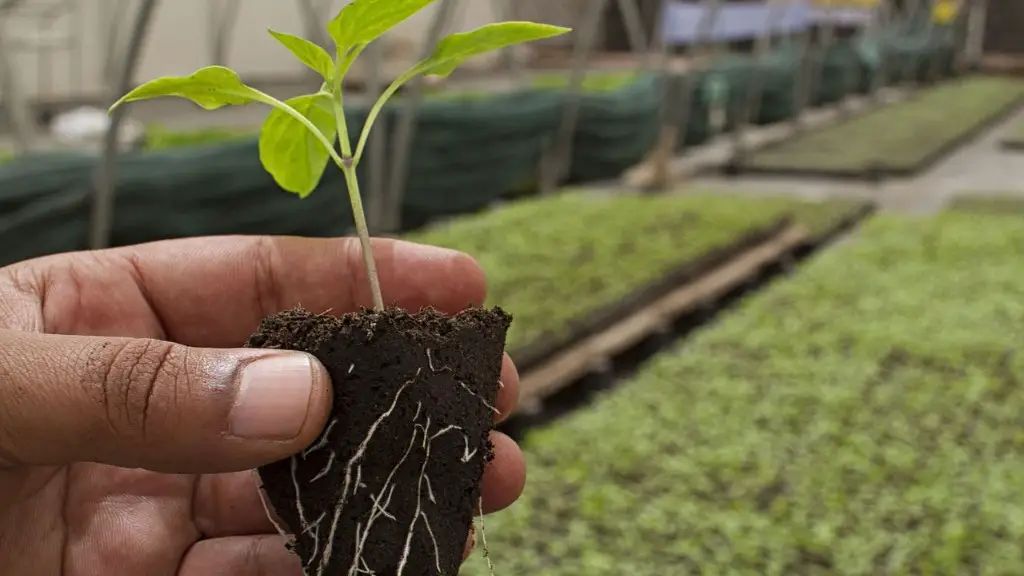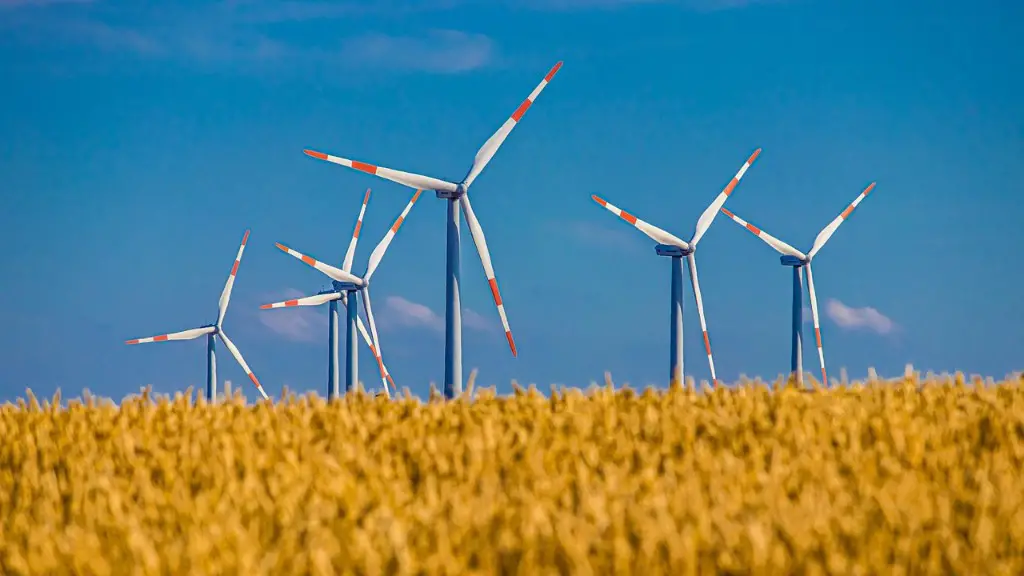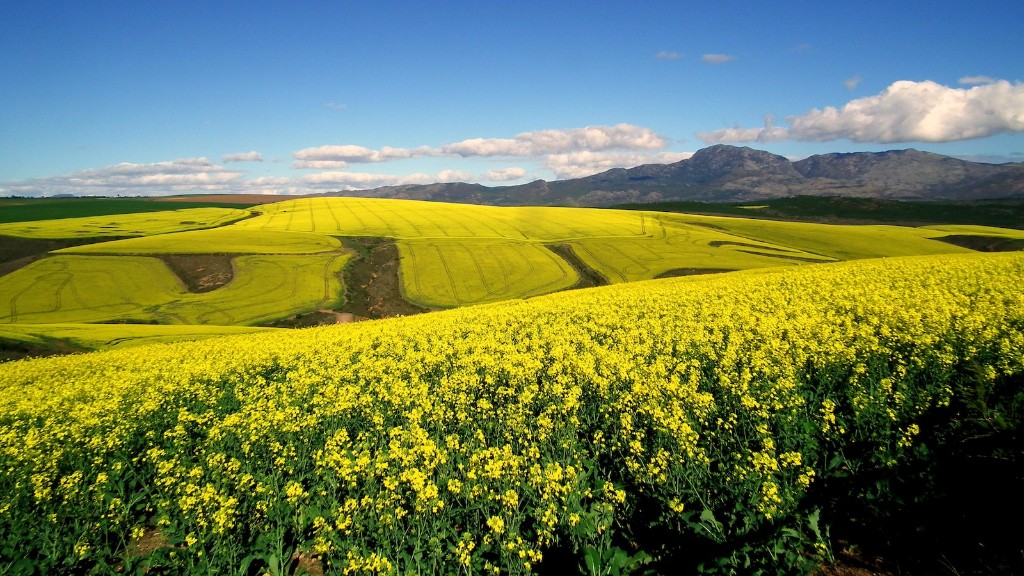Agriculture has been a cornerstone of human societies throughout our history and it is one of the most important industries in the modern world. There are three main types of agriculture which are practiced today, each of which has its own unique set of characteristics. These three types of agriculture are subsistence, intensive and commercial.
Subsistence agriculture is the type of farming which is primarily used to support the needs of the people who are living and working on the farm. This type of farming seeks to increase the yield of existing land with minimal inputs and it is the most basic form of food production. Subsistence farming is usually practiced on small plots of land and is usually labour intensive.
Intensive agriculture is the opposite of subsistence agriculture. In this type of farming, large inputs of labour and capital are used to produce large amounts of food in small spaces. This type of agriculture generally results in high yields but can be extremely labour and capital intensive.
Finally, commercial agriculture is the type of agriculture which is used to produce food for sale on the market. This type of agriculture seeks to maximize yields and profits, which generally involves the use of large-scale inputs of labour and capital. This type of farming is generally large-scale and technology-driven.
The Benefits of Subsistence Agriculture
The primary benefit of subsistence agriculture is that it meets the subsistence needs of the people who practice it. Since this type of farming seeks to increase the yield of existing land with minimal inputs, it can be extremely efficient and cost effective. Subsistence farming is also beneficial in that it provides employment opportunities to those who are living and working on the farm, and can help to reduce poverty and inequality in rural communities.
In addition, subsistence agriculture is generally seen as being more environmentally friendly than intensive or commercial agriculture, since it typically uses fewer inputs and less technology, and has less of an impact on the environment. This type of farming can help to preserve traditional cultures and knowledge, as well as conserve biodiversity. Finally, subsistence farming is often seen as a way to increase food security for communities, as it eliminates the need for vulnerable communities to depend on food imports.
While subsistence agriculture can be a beneficial type of farming, it can also be vulnerable to environmental factors such as droughts, floods, and pests. This type of farming is also generally labour intensive and can be difficult to scale up, which limits its potential for meeting the nutritional needs of larger populations.
The Benefits of Intensive Agriculture
The primary benefit of intensive agriculture is that it produces large quantities of food in small spaces with relatively high yields. As such, it can be an effective means of increasing the food supply in areas where land is limited, or where traditional subsistence farming is not possible. This type of agriculture generally requires large amounts of labour and capital, which can be provided by the government or by private entities, and can help to create employment opportunities in rural areas.
In addition, intensive agriculture can be more efficient and cost effective than subsistence farming, and can be more easily scaled up to meet the food needs of larger populations. This type of agriculture can also be more resistant to the effects of environmental factors such as droughts, floods, and pests. Finally, intensive agriculture can help to reduce poverty and inequality in rural areas, as it can create employment opportunities and economic benefits.
However, intensive agriculture can also have a negative impact on the environment. The use of large inputs of labour and capital can result in the over-exploitation of resources, such as water and soil, and can increase the risk of soil erosion and pollution. In addition, this type of agriculture can reduce biodiversity and can lead to monocultures which are susceptible to pests and diseases.
The Benefits of Commercial Agriculture
The primary benefit of commercial agriculture is that it seeks to maximize yield and profits, which can bring economic and employment benefits to certain areas. By maximizing yields, commercial agriculture can help to increase the food supply in areas which may have limited access to food, or where traditional subsistence and intensive farming is not possible. This type of farming can also result in employment opportunities in rural areas.
In addition, commercial agriculture is generally seen as being more efficient and cost-effective than subsistence and intensive agriculture. This type of farming is also more resistant to environmental factors such as droughts, floods and pests, as it can involve the use of technology and large inputs of capital and labour. Finally, commercial agriculture can also preserve traditional knowledge and cultures, and can reduce poverty and inequality in rural communities.
However, commercial agriculture is also associated with numerous risks and challenges. As it seeks to maximize yields and profits, it can require the use of large inputs of labour and capital, which can lead to over-exploitation of resources and increased pollution. Commercial agriculture can also lead to monocultures and reduce biodiversity, which can make farms more vulnerable to pests and diseases. In addition, this type of farming can be more vulnerable to fluctuations in market prices.
The Impact of Agriculture on the Environment
The type of agriculture that is practiced can have a significant impact on the environment. Subsistence agriculture is generally seen as being more environmentally friendly than intensive or commercial agriculture, as it typically uses fewer inputs and less technology, and has less of an impact on the environment.
Conversely, intensive and commercial agriculture can have a more negative impact on the environment. These types of farming typically involve the use of large inputs of labour and capital, and can lead to the over-exploitation of resources and increased pollution. In addition, these types of farming can reduce biodiversity and lead to monocultures which are more vulnerable to pests and diseases.
Finally, all types of agriculture can have a significant impact on water resources. All types of agriculture require access to water to produce food, and the amount of water that is necessary to irrigate crops will vary depending on the type of agriculture that is being practiced. In addition, all types of agriculture can have an impact on the quality of water resources, as they can lead to increased runoff and can introduce pollutants into water sources.
The Impact of Agriculture on Social Structures
Agriculture can also have a significant impact on social structures. Subsistence agriculture can help to create employment opportunities in rural areas and can help to reduce poverty and inequality. In addition, this type of farming can help to preserve traditional cultures and knowledge.
Conversely, intensive and commercial agriculture can have a more negative impact on social structures. These types of agriculture typically require the use of large amounts of capital and labour, which can lead to the exploitation of workers and can reduce the economic benefits to local communities. In addition, these types of agriculture can reduce biodiversity, which can lead to the erosion of traditional knowledge and cultures.
Finally, all types of agriculture can have an impact on food security. By increasing the food supply, all types of agriculture can help to reduce hunger and malnutrition in vulnerable communities. However, all types of agriculture are vulnerable to the effects of environmental factors such as droughts and floods, which can reduce the available food supply and render communities vulnerable to food insecurity.
The Impact of Agricultural Policies on Agriculture
Agricultural policies can also have a significant impact on the type of agriculture that is practiced. Government subsidies and other incentives can encourage certain types of agriculture, such as intensive and commercial agriculture, while restrictions and taxes can discourage certain types of agriculture. In addition, government policies can influence the prices of food and other commodities, which can have an impact on the profitability of certain types of agriculture.
In addition, agricultural policies can have an impact on the environment. Government policies can encourage the use of sustainable farming practices, or discourage the use of damaging practices, which can have a significant impact on the environment. Finally, agricultural policies can also have an impact on social structures, as certain policies can encourage or discourage certain types of agriculture.
Agriculture is an important industry, and the type of agriculture that is practiced can have a significant impact on the environment, social structures, and economies. While all types of agriculture have their own unique benefits and drawbacks, government policies can play a significant role in determining the type of agriculture that is practiced, as well as its impact on the environment, social structures, and economies.





